 |
 |
 |
| |
Monogram HIV-1 Genotype Algorithms for Prediction of Etravirine Susceptibility: Novel Mutations and Weighting Factors Identified Through Correlations to Phenotype
|
| |
| |
Reported by Jules Levin
XVII HIV Drug Resistance Workshop
June 10-14, 2008
Sitges, Spain
J Benhamida, C Chappey, E Coakley, NT Parkin
Monogram Biosciences,
South San Francisco
CA USA.
BACKGROUND
⋅ Etravirine (ETR) is a recently approved nonnucleoside RT inhibitor (NNRTI) with activity against many HIV-1 strains resistant to other NNRTIs.
⋅ The presence of 3 or more "etravirine mutations" (V90I, A98G, L100I, K101E/P, V106I, V179D/F, Y181C/I/V, and G190A/S) has been associated with reduced response in clinical trials.
⋅ Analysis of larger phenotype/genotype databases can provide additional information, including which mutations have relatively greater impact on resistance than others.
AUTHOR CONCLUSIONS
⋅ Existing etravirine genotype interpretation rules under-estimate phenotypic RS (reduced susceptibility).
⋅ The improved scoring system with weighted mutations reduced this type of discordance and should be tested in additional validation studies.
⋅ The sensitizing effects of NRTI mutations on etravirine resistance, or the effect of other potent drugs that are co-administered in clinical studies, may be responsible for differences between scoring systems based on clinical response or on phenotypic susceptibility.
METHODS
⋅ The fold-change FC) in etravirine IC50 of samples submitted for routine resistance testing was determined (Phenosense HIV, Monogram Biosciences).
⋅ An extensive list of substitutions, including polymorphisms, potentially associated with NNRTI resistance was considered:
V90I, A98G, L100I, K101E/H/P/Q, K103H/N/R/S/T, V106A/I/M, V108I, E138A/G/K/Q, T139R, V179D/E/F/G/I/L/M/Y, Y181C/I/F/G/S/V, Y188C/H/L, V189I, G190A/C/E/Q/S/T/V, H221Y, P225H, F227C/L, M230I/L, P236L, K238N/T
⋅ Samples containing at least one such mutation were used for genotype rule derivation (n=2756).
⋅ Samples lacking NRTI mutations, that may be associated with increased NNRTI susceptibility, were studied separately (n=1006).
⋅ The lower clinical cutoff for etravirine (2.9) was used to define reduced susceptibility (RS).
⋅ A step-wise, iterative algorithm was used to determine weighting factors (WF) (see Panels 4 and 5)
⋅ Mutations were entered into the algorithm in order based on relative magnitude of their impact on etravirine susceptibility by univariate analysis.
⋅ Mutation weighting was determined by minimizing phenotype-genotype discordance rates.
RESULTS
⋅ The presence of 3 or more etravirine mutations was insufficient in predicting RS, with 14.6% of samples with RS having 2 or fewer mutations (median FC 8.2, range, 2.9 to >200).
⋅ Four groups of mutations were defined and assigned WF of 1 to 4, with a total score of RS.
⋅ Mutations with a WF of 4 (sufficient to confer partial reduction in susceptibility on their own) included L100I, K101P, and Y181C/I/V (see Panel 6)
⋅ The revised algorithm reduced the frequency of unexpected RS to 2.4%.
⋅ Among samples with NNRTI mutations but no NAMs, discordance rates were much lower, likely reflecting less complex NNRTI resistance patterns.
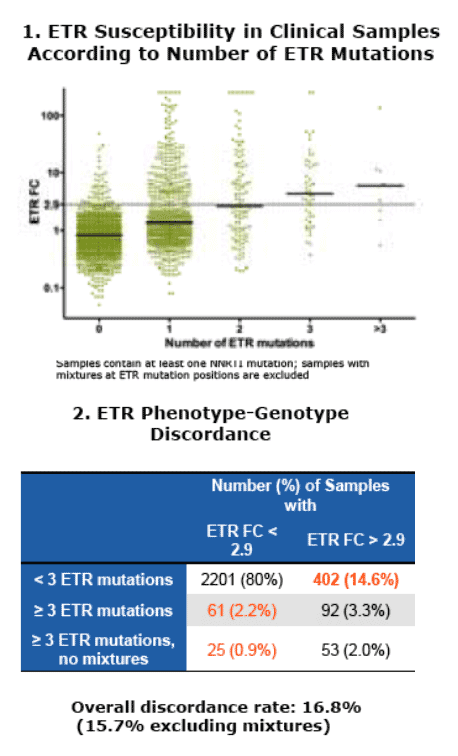
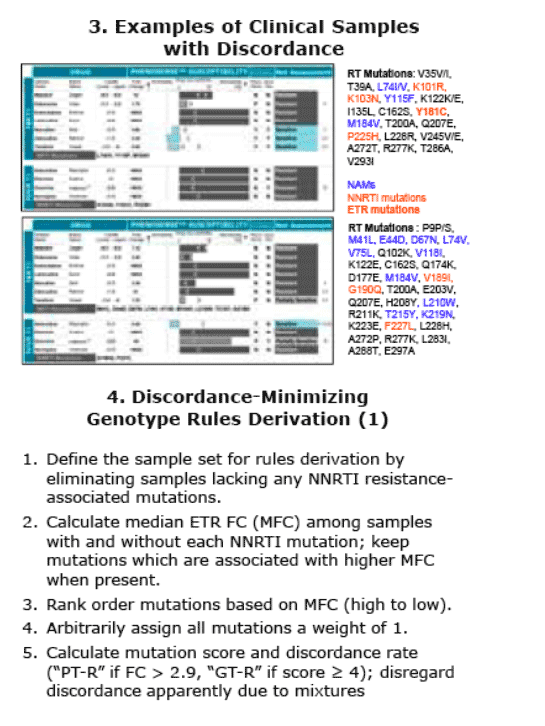
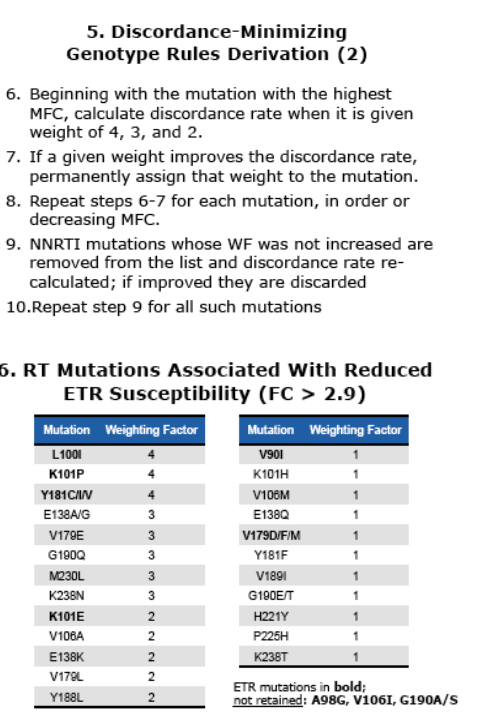
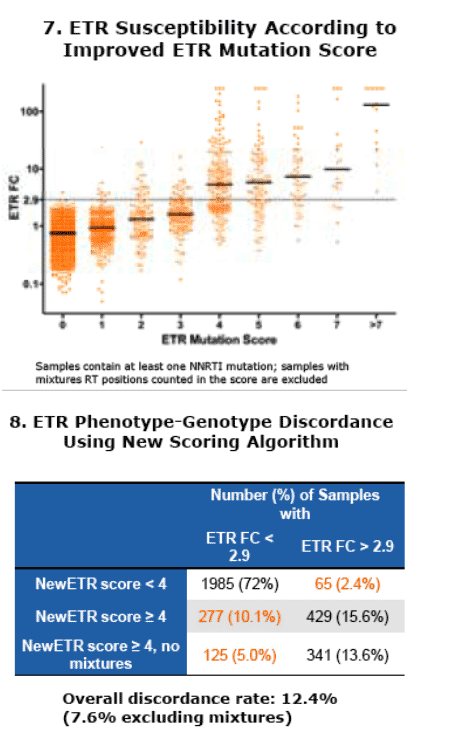
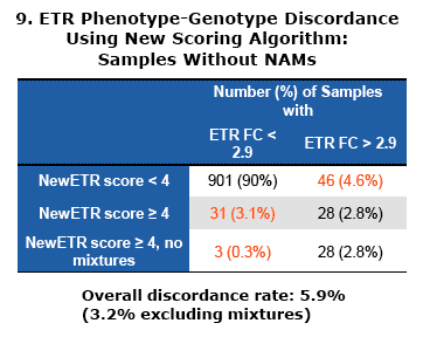
|
| |
|
 |
 |
|
|